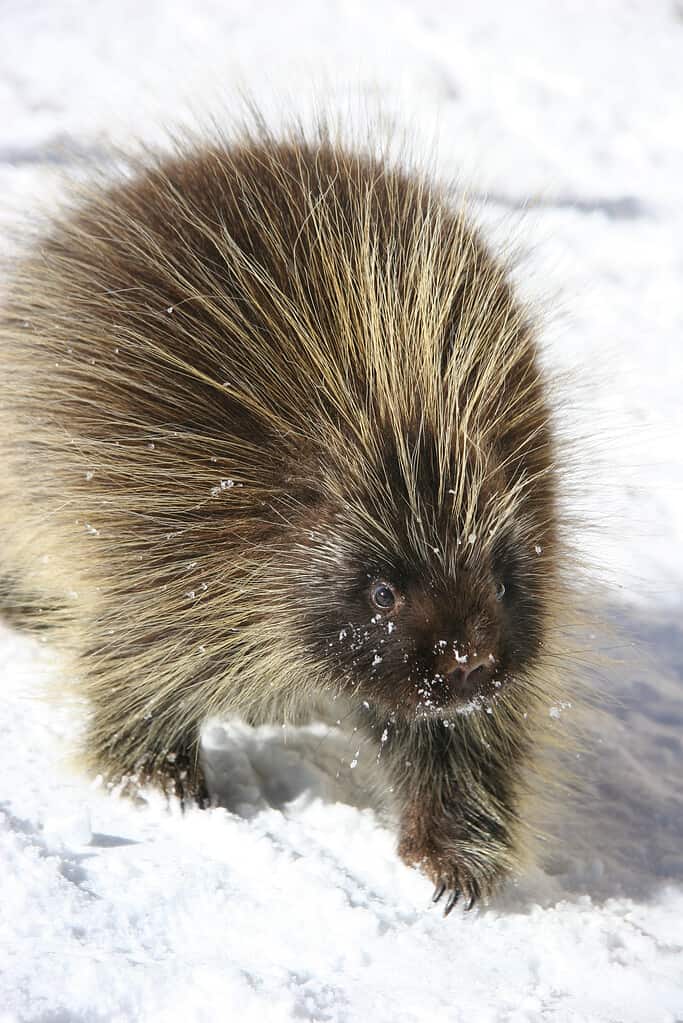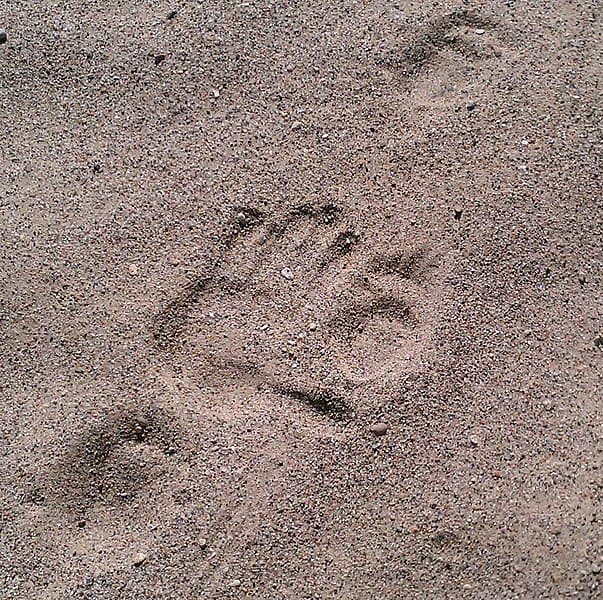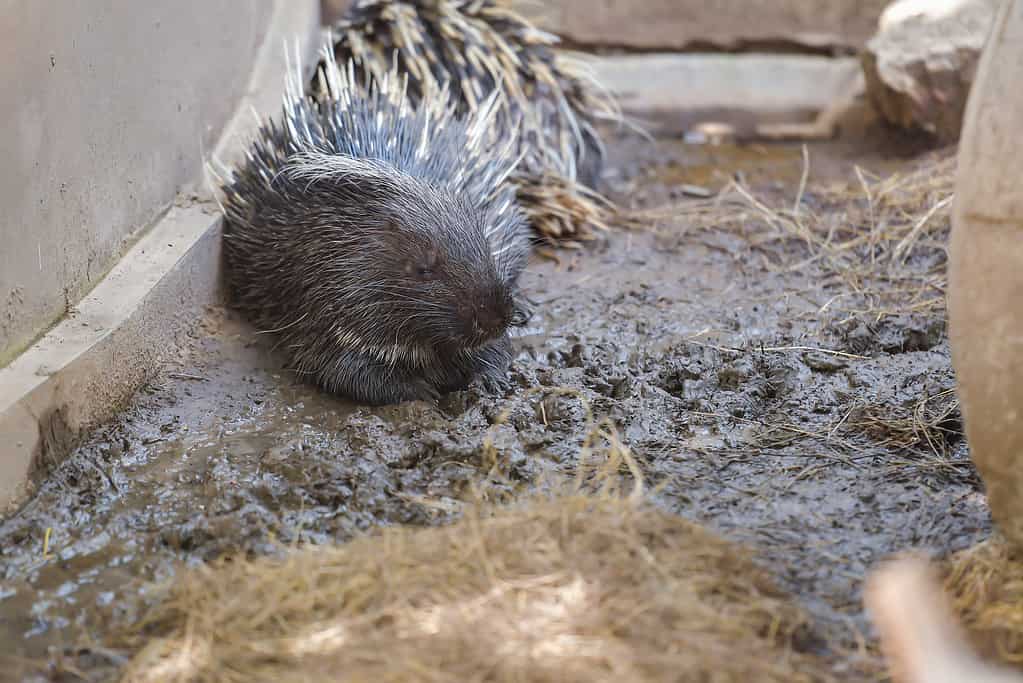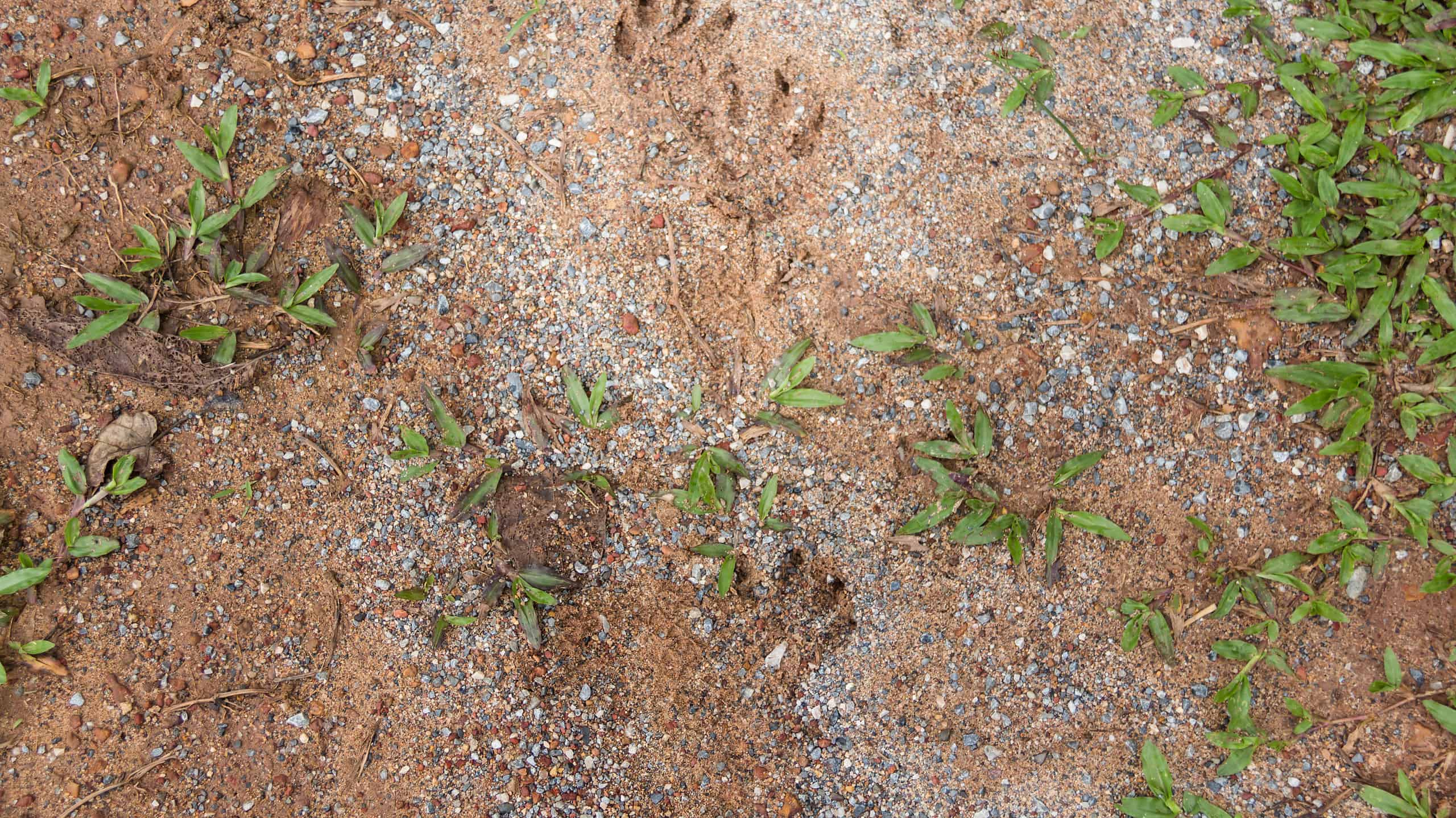The porcupine is a funny-looking large rodent. While extremely slow, they have sharp quills on their backs that protect them from predators. Therefore, they don’t need to be in a hurry. These rodents occur on every continent except Antarctica. However, they are classified into two groups depending on their location. For example, the Old World porcupines inhabit Asia, Europe, and Africa, while the New World porcupines occur in the Americas. As a result, the North American porcupine is the only one found in Canada and the United States. So, unless you live in Antarctica, there is a good chance you can stumble across porcupine tracks in the forest, snow, sand, or mud. Here is a guide to help you identify their footprints.
Porcupine Tracks
The porcupine’s track will show four toes on the front print and give on the hind paw. In addition, they have long claws, which are visible in their tracks. Furthermore, their heel pads have a pebbly texture, which acts as a non-slip surface. The texture on their heel pads helps them climb trees. Sometimes, porcupines drag their tails through their paw prints, disfiguring their tracks.
Porcupine Tracks in the Snow

The porcupines’ front prints measure 2.5 inches long, and their hind prints are approximately 3.5 inches long.
©PGile/Shutterstock.com
Unfortunately, porcupine tracks lack detail, even in the snow. However, this is also the reason they are so distinctive. Additionally, the clearness of the print is determined by the texture of the snow or the porcupine’s feet. For example, their feet are designed to grip tree trunks but leave few details in the snow due to their foot pads. Their metacarpal pads (located behind the toe) have a pebbly surface, which is great for climbing, but creates a blurred imprint. While porcupines have long claws that sometimes leave marks in the snow, more often than not, there are now nail prints visible.
Porcupine Tracks in the Sand

Porcupine tracks in the sand. Human adult handprint is shown for scale. Drag marks between porcupine tracks are from the animal’s tail.
It is easy to identify porcupine tracks in soft desert sand because their quills drag next to their footprints. However, there is usually a combination of clues that help you identify their tracks. For example, their habitat is a key factor. When one sees porcupine prints on a sand dune, they generally walk from one stretch of forest to another, so if you see something similar, the trail probably belongs to a porcupine. In addition, the width and length of the track are also essential. Other characteristics also include:
- Footprints are generally the size of a human palm
- Tail print disfiguring the tracks
- They are pigeon-toed and waddle
Porcupine Tracks in the Mud

Porcupine tracks in the mud are often accompanied by drag marks from their tails.
©jirayupol kiriyaporn/Shutterstock.com
The porcupine’s tracks in the mud are much more detailed, so you can see the pebbly texture of their feet pads in the print. In addition, their tracks in the mud are often accompanied by drag marks from their tails.
Alternative Porcupine Identification
There are other ways of identifying porcupines besides their tracks, and they include:
Porcupine Scat
You know a porcupine is in the area if you see their scat which is in pellet form and usually found at the base of trees where they often feed.
Noisy
Porcupines make a lot of noise when they walk, eat, or fight. In addition, they can make several different sounds, which include:
- Coughs
- Shrill screeches
- Whines
- Chatters
- Groans
- Low grunts
Chews Bark and Small Twigs
When there is an active porcupine in the area, you can identify it by looking at the trees. For example, they like to gnaw and eat tree bark, so they will often leave trunks bare or nibble it in certain areas. In addition, they also like to eat twigs, so there will numerous broken twigs around the base of trees.
Porcupine Den
Because the porcupines do not hibernate, they take cover in dens during bad weather. However, they sometimes build their own nests. But, mostly, they make dens out of:
- Hollow logs
- Other animal’s abandoned burrows
- Rock ledges
- Under stumps
- Blown down trees
- Under buildings
Leaves Quills Behind
Contrary to popular belief, porcupines do not shoot their quills at unsuspecting victims. Instead, their sharp quills are loosely attached and, when fully grown, dislodge at the slightest touch. Furthermore, they generally use their tails to slap their attackers. So, when a predator pounces on them, the quills will puncture their skin, and because they have barbs, they will dig deeper and deeper until removed. Their quills are modified hairs with hollow shafts that measure around five inches long. Additionally, they are approximately 30,000 quills on their bodies.
Thank you for reading! Have some feedback for us? Contact the AZ Animals editorial team.








